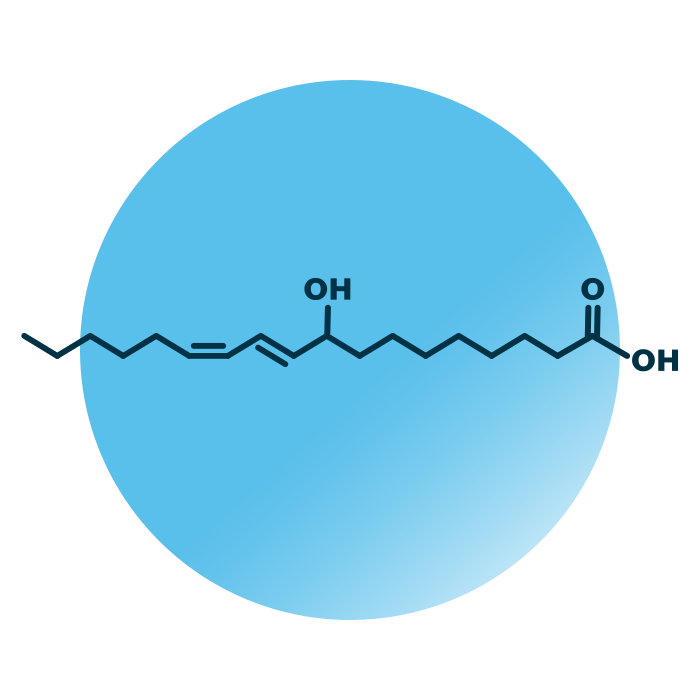About the structure and biological function of oxiODE
Structure. Oxidized octadecadienoic acids (oxiODE) belong to the group of octadecanoids within the fatty acyls. Their structure is based on octadecanoic acid, an eighteen carbon atoms long hydrocarbon chain with a carboxyl group. The chain contains two double bonds, from which their name derives. OxiODEs may further encompass multiple oxygen containing substituents such as hydroxy and epoxy groups.
Function. Oxidized octadecadienoic acids are associated with inflammation. They activate receptors inducing pro-inflammatory cytokines, proteins that are vital in controlling of immune system cells. They further contribute to pain perception and serve as markers for oxidative stress. While oxiODEs may trigger programmed cell death in some cancers, elevated levels of oxidized octadecadienoic acids have been found in psoriasis and non-alcoholic steatohepatitis (NASH).
